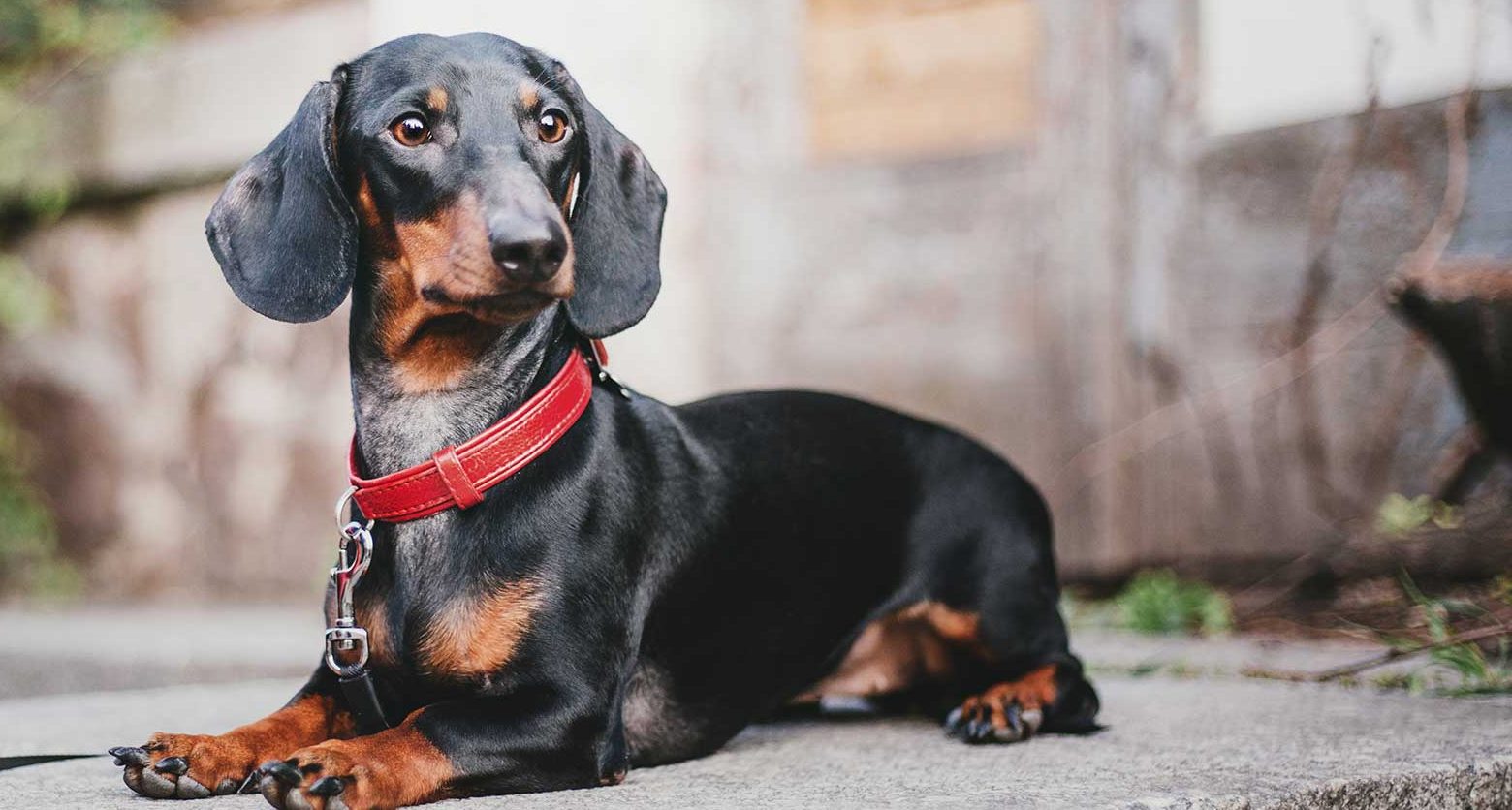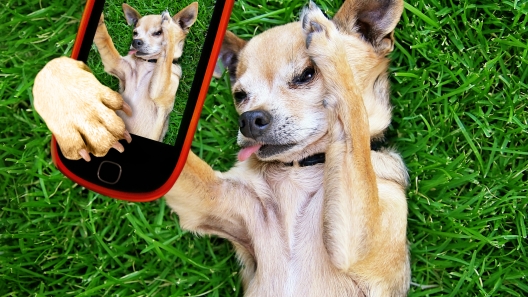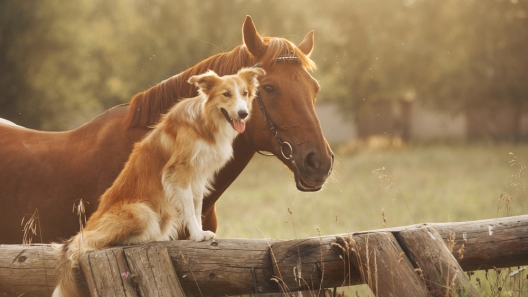-
Activity Level:
moderate
-
Shedding Level:
moderate
-
Grooming Level:
moderate
-
Trainability:
moderate
-
Good for Novice Owners:
moderate
-
Adaptability:
high
-
Kid/Pet Friendly:
often
-
Prey Drive:
moderate
-
Watchdog:
very alert
- Average Size: Small
- Average Lifespan: 12-16 years
- Registered?: aca, akc
Dachshund Dog Breed Information
Overview
Temperament
Adaptability
Health
Owner Experience
Grooming
Activity Level
Size
Life Span
Did You Know?
The Dachshund, sometimes affectionately referred to as a “wiener dog”, “hot dog”, “sausage dog”, and Doxie, is known for their long body and short legs. They were originally bred to be an independent hunter of badgers and other dangerous prey.
One of the facts about Dachshunds is that they could also work in packs to hunt larger game. Historically, packs of Dachshunds could be used to chase and hunt down wild boar. The Dachshund originated in Germany and means “badger dog” in German.
Their lineage can be traced back over 600 years and they have been a national symbol of Germany for a long time. The AKC admitted them to the Stud Book and recognized them as a member of the Hound Group in 1885. They quickly became one of the most popular dog breeds after that.
The “Wiener Dog” is clever, lively, and courageous. They have a friendly, spunky, and curious nature. As one of the most affectionate dog breeds, they love their families and tend to get along well with children as long as they are well-socialized.
Dachshunds tend to be vigilant watchdogs that are initially wary of strangers and have a “big-dog” bark. They are prone to barking, but you can socialize them and train your dog to stop barking early on to keep it to alert barking instead of a nuisance.
Although initially suspicious of strangers, well-socialized Doxies tend to warm up once introduced. They do also have a strong prey drive, which can be an issue for animals in the home smaller than they are unless they have been properly socialized with them.
Some Dachshunds may be fine with animals they consider part of the family, but still chase other animals. They are generally open and friendly towards other dogs; here again, socialization early and often makes a big difference.
Dachshunds are highly adaptable dogs. As long as they get enough daily attention and exercise, they do well in apartments or in larger homes with fenced yards and get along well with families of all types, including children. They are even considered one of the best dog breeds for farms; known for reducing pests and alerting as watchdogs!
These little dogs are sensitive to heat and to cold. They are one of the dog breeds that hate winter and do best in moderate climates. If your area has colder winters, you will definitely want to pick up some winter dog gear to keep your Doxie warm while out on walks in the cold.
Due to their prey drive, they do have the urge to chase and should only be let off-leash in securely fenced areas. Although individual Dachshunds may do well with off-leash training and recall commands, overall, they may ignore recall commands in favor of an exciting chase.
Potential health concerns to be aware of in Dachshunds can include progressive retinal atrophy, intervertebral disc disease, epilepsy, diabetes, and Cushing’s Disease. Good breeding practices make a big difference in the health of puppies.
Reputable breeders will screen their dogs to avoid passing preventable issues to puppies. Make sure you ask about the genetic history of both parents and about any health tests or clearances that have been done. The national breed club recommends a cardiac exam, a patella evaluation, and an ophthalmologist evaluation at a minimum.
Because of their shape and stature, Dachshunds can be prone to back injuries and disc damage, especially as they age. Running up and down stairs or jumping on and off furniture can cause damage to your Dachshund’s back over time. Installing ramps to help limit high-impact jumps and other ways to help arthritic dogs can also help protect your Doxie’s back as they age.
Although they are a smaller dog breed, Dachshunds are barrel-chested and can be at a higher risk for bloat. Bloat in dogs can quickly become dangerous and will become fatal if the stomach flips, so it’s important to know how to reduce the risk and what symptoms to look for so you can get to the vet immediately.
A Dachshund can be a good fit for a novice owner as long as they attend obedience and puppy training classes. Although affectionate and eager to please, this dog breed is highly intelligent, independent, and has a stubborn streak, which requires plenty of patience when it comes to training.
They can be difficult to train and respond to reward-based dog training techniques. Although these little dogs can seem to have an independent nature, they do bond closely with their owners and are sensitive. Harsh commands or tone of voice or punishments can damage your bond with them.
These dogs are moderate shedders and their coats require moderate grooming. The Dachshund coat comes in three types – smooth, wiry, or long. A smooth-haired Dachshund will have short, smooth, and shiny fur. The wire-haired coat type features short, thick fur. A long-haired Dachshund will have sleek and slightly wavy fur.
The coat comes in a variety of patterns and colors. Regular brushing and a bath, when needed, will keep this dog’s coat healthy. A long-haired Dachshund will need to be brushed a few times a week at least to prevent mats and tangles.
In addition to coat care, you will also need to take care of your Dachshund’s nails, ears, and teeth. You will want to trim your dog’s nails once or twice monthly to keep them from growing too long. It’s also important to regularly check and clean their ears when needed. Since Doxies have ears that flop over, they are more prone to ear infections because their ears tend to trap more dirt and moisture.
In order to protect your pup from gum disease, which is one of the most common health problems in dogs, it’s important to clean their teeth regularly. Brushing your dog’s teeth every day and getting cleanings at the vet when needed can help avoid serious dental problems later in life.
Dachshunds have a low to moderate activity level. Daily walks plus some playtime are usually enough for these dogs. But, if they are having a burst of energy, they may be up for more if you are. Just make sure you are sticking to vet-approved activities that will not hurt their backs.
Doxies can be prone to weight gain, which puts unnecessary pressure on their short legs, joints, and back. So, a good diet and enough exercise are necessary to keep this dog happy and healthy. Provided puppies are finished growing and it’s not too high impact, regular exercise helps your Dachshund build and maintain muscles, which will also help protect and support their back.
Dachshunds are one of the smallest dog breeds. Fully-grown Dachshunds usually stand 5-9 inches tall at the shoulder and will range in height and weight depending on whether they are Standard or Mini Dachshunds.
Standard Dachshunds usually stand 8-9 inches tall and weigh 16-32 pounds. Miniature Dachshunds usually stand 5-6 inches tall and weigh 11 pounds or fewer.
Dachshunds generally live for 12-16 years on average.
A Dachshund was chosen as the first official mascot for the 1972 Summer Olympics. His name was Waldi.









